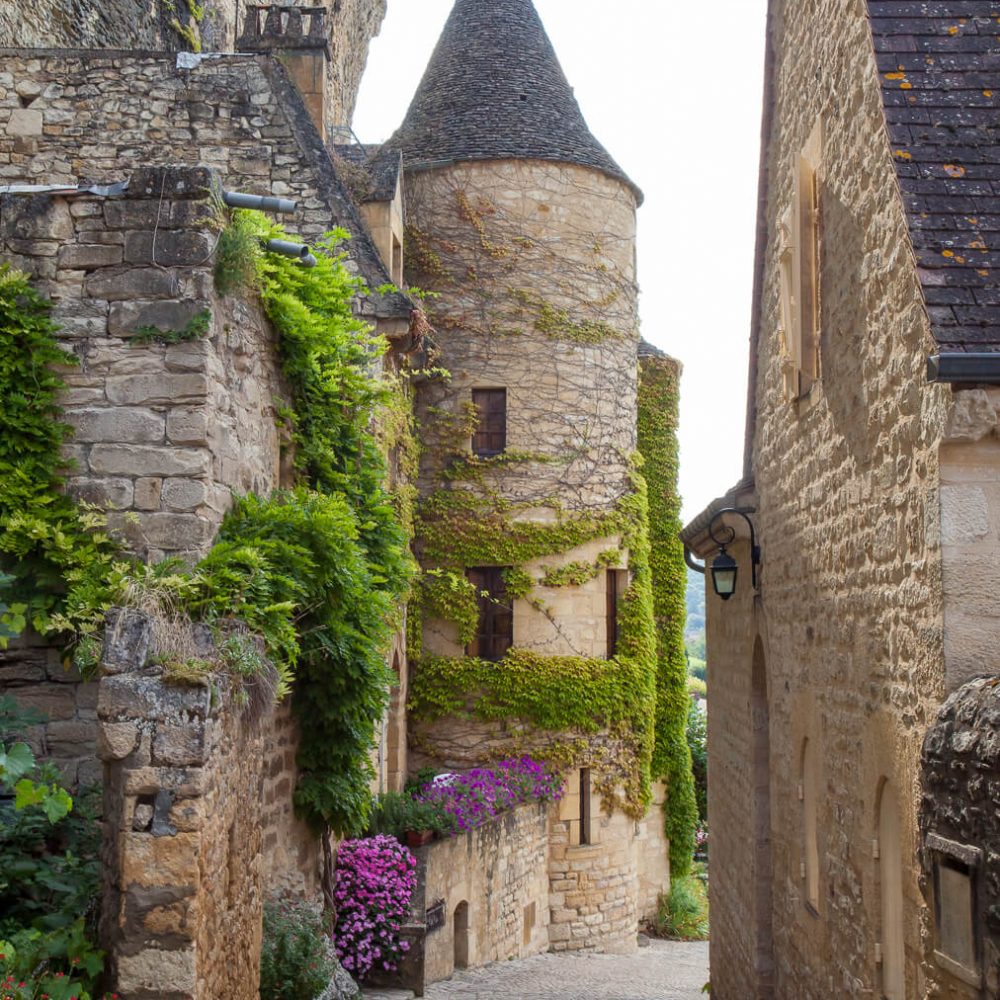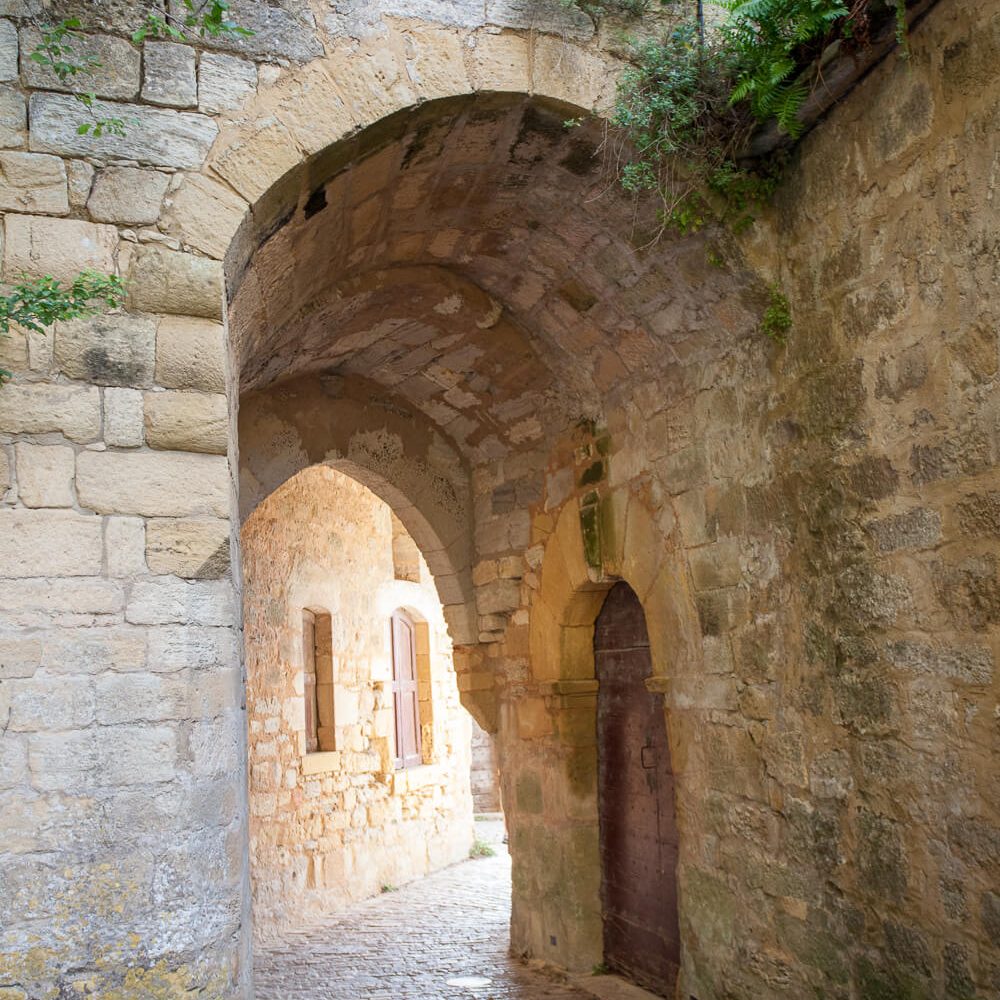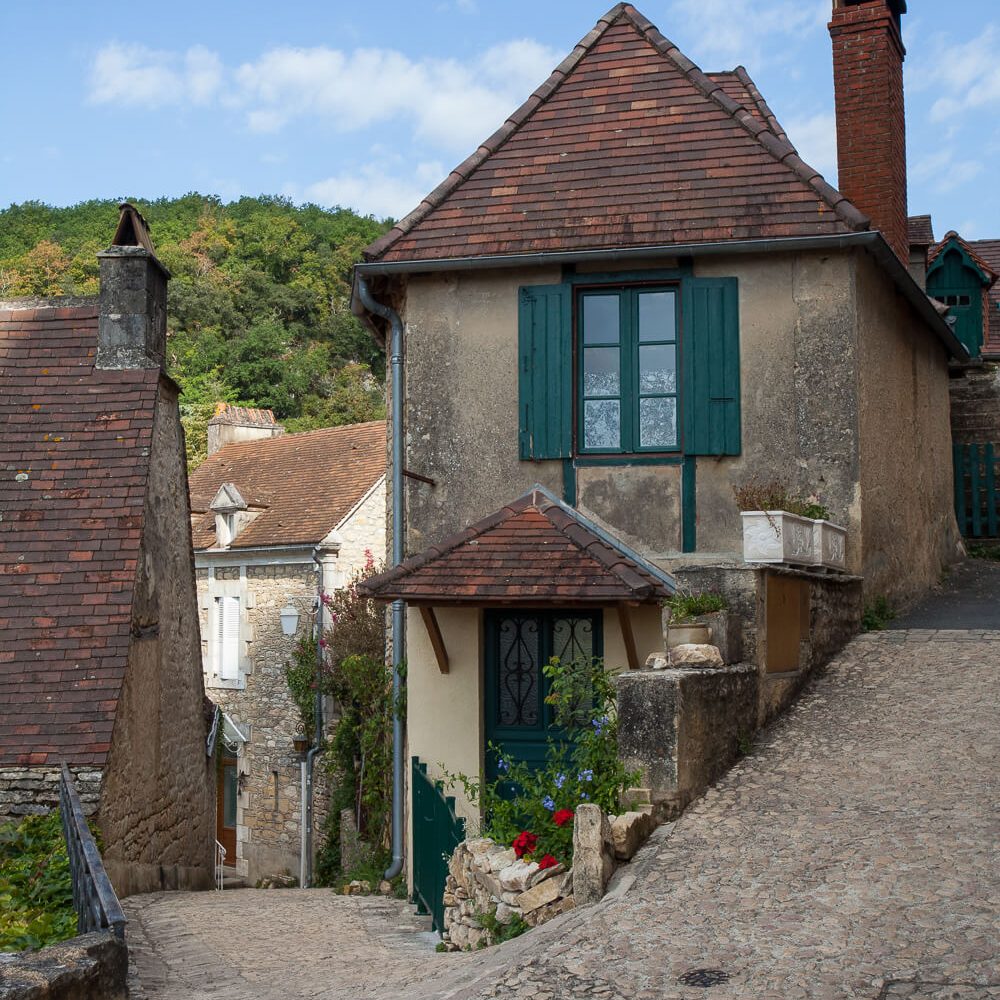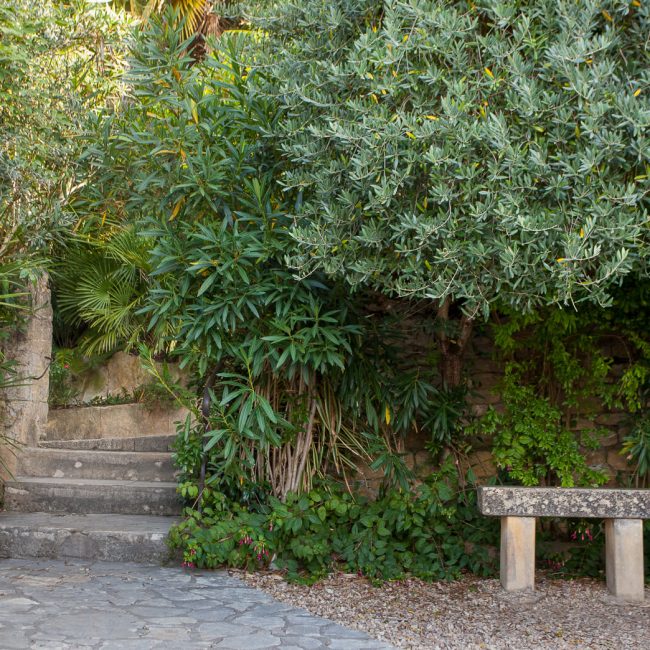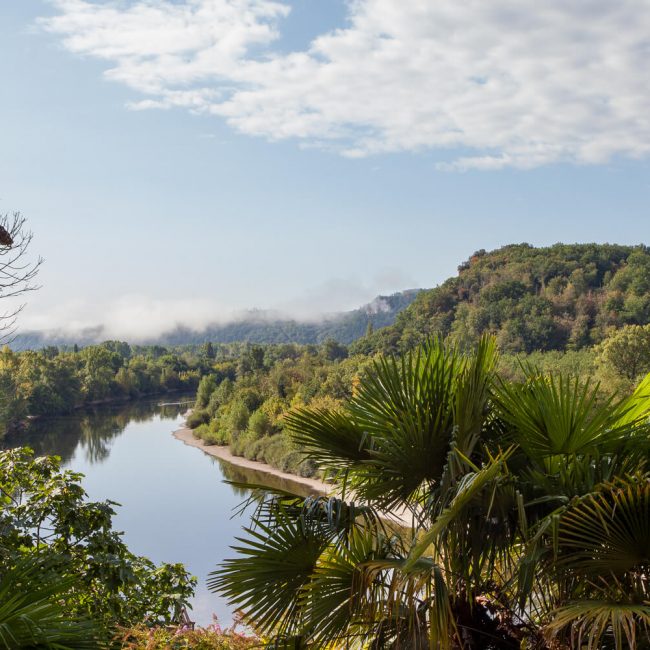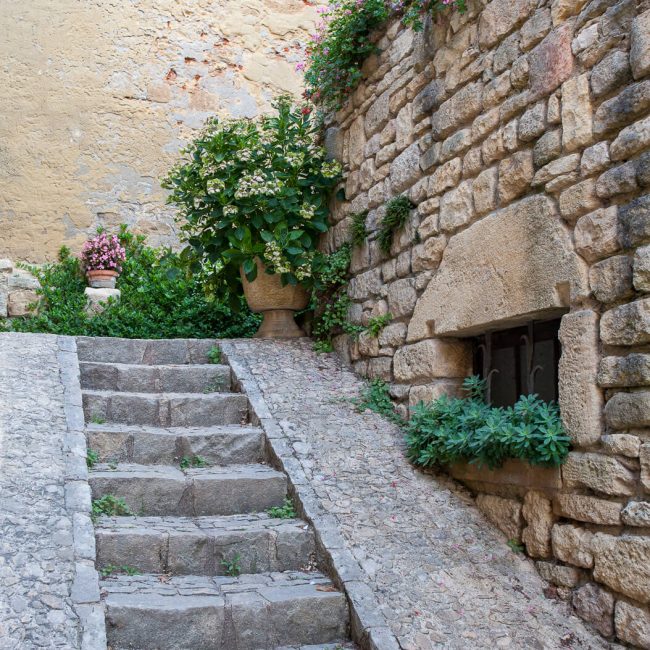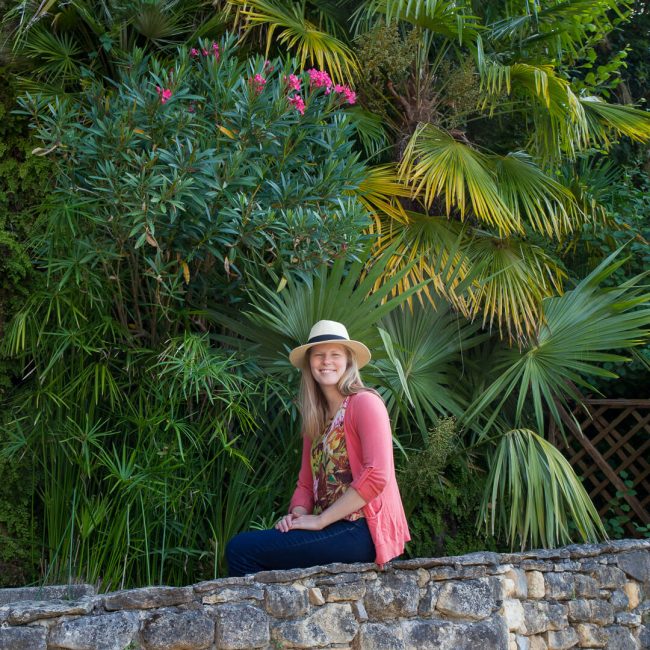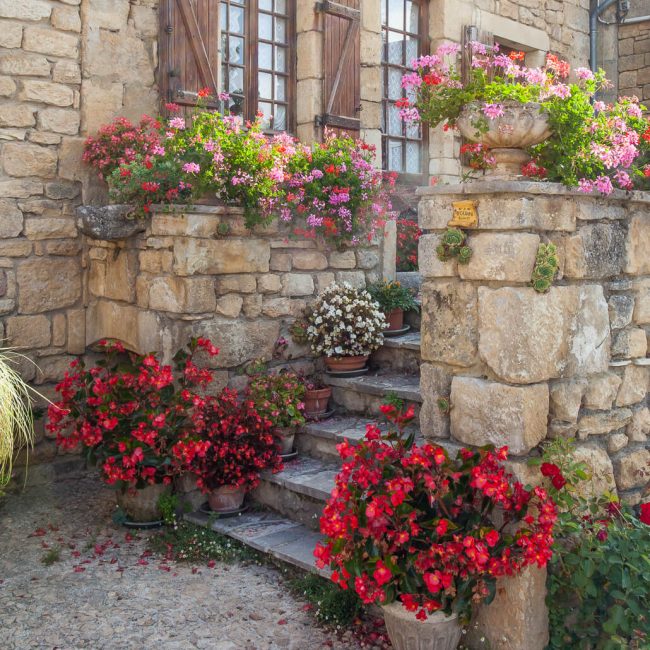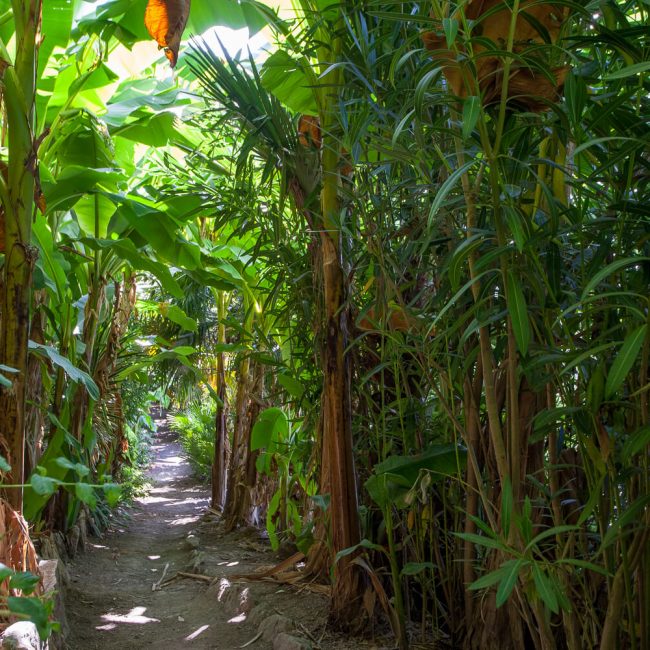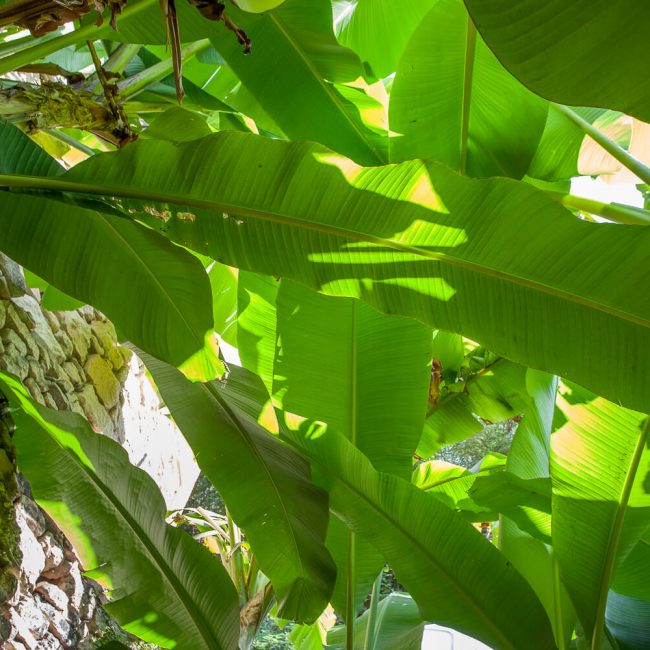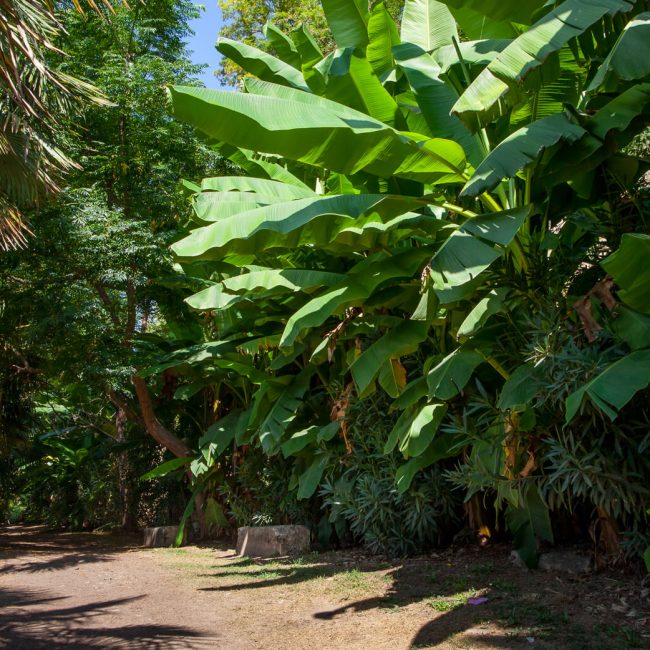The Exotic Gardens of La Roque de Gageac
Chicago’s Best Deep Dish Pizza. World Famous Cinnamon Rolls. Home of Maine’s Best Blueberry Pie. Outrageous claims like these are hard to believe and are usually the furthest thing from the truth. But when the French say this, you should listen. La Roque de Gageac is considered to be one of France’s most beautiful villages or “Les Plus Beaux Villages de France.” After visiting, I’d have to agree.
Perched on the banks of the Dordogne river, La Roque de Gageac is a picturesque medieval village with a surprise. Mediterranean and subtropical plants grow abundantly among the golden stone houses.
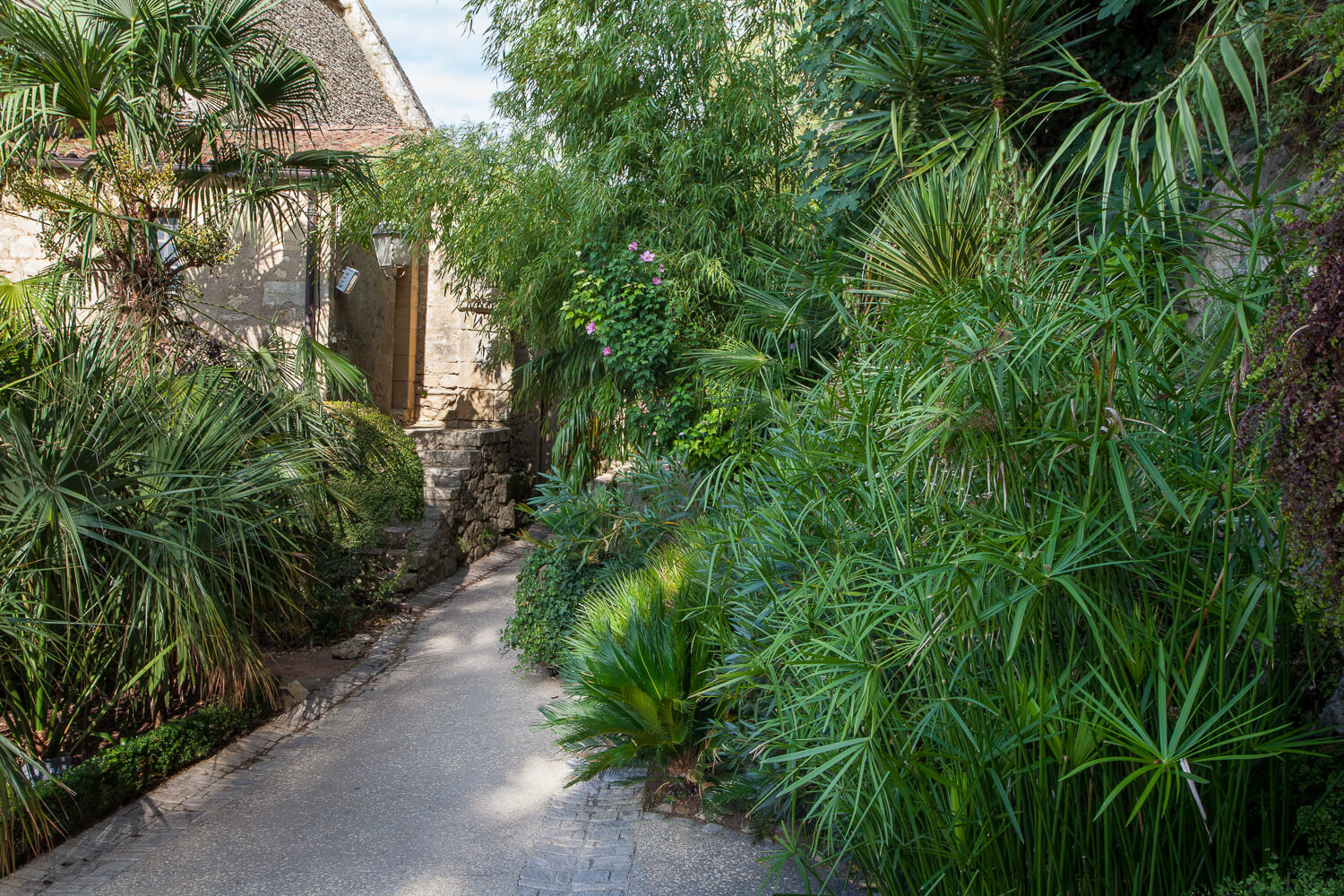
An Unexpected Tropical Oasis
Walking along the narrow alleys of the village of La Roque de Gageac, it’s easy to feel as if you’ve stepped back in time. Nestled between the Dordogne river and steep sandstone cliffs, the medieval village looks unchanged by the past 500 years.
Starting from the river’s edge, several rows of houses are built on uneven terraces that ascend towards the cliffs. Many of the houses are actually built into the cliffside. Typical of the Dordogne region, they’re made of ochre stone and are topped with brown stone tile roofs. The weathered stone blends into the cliff, especially at sunset when their honey-color is amplified by the setting sun.
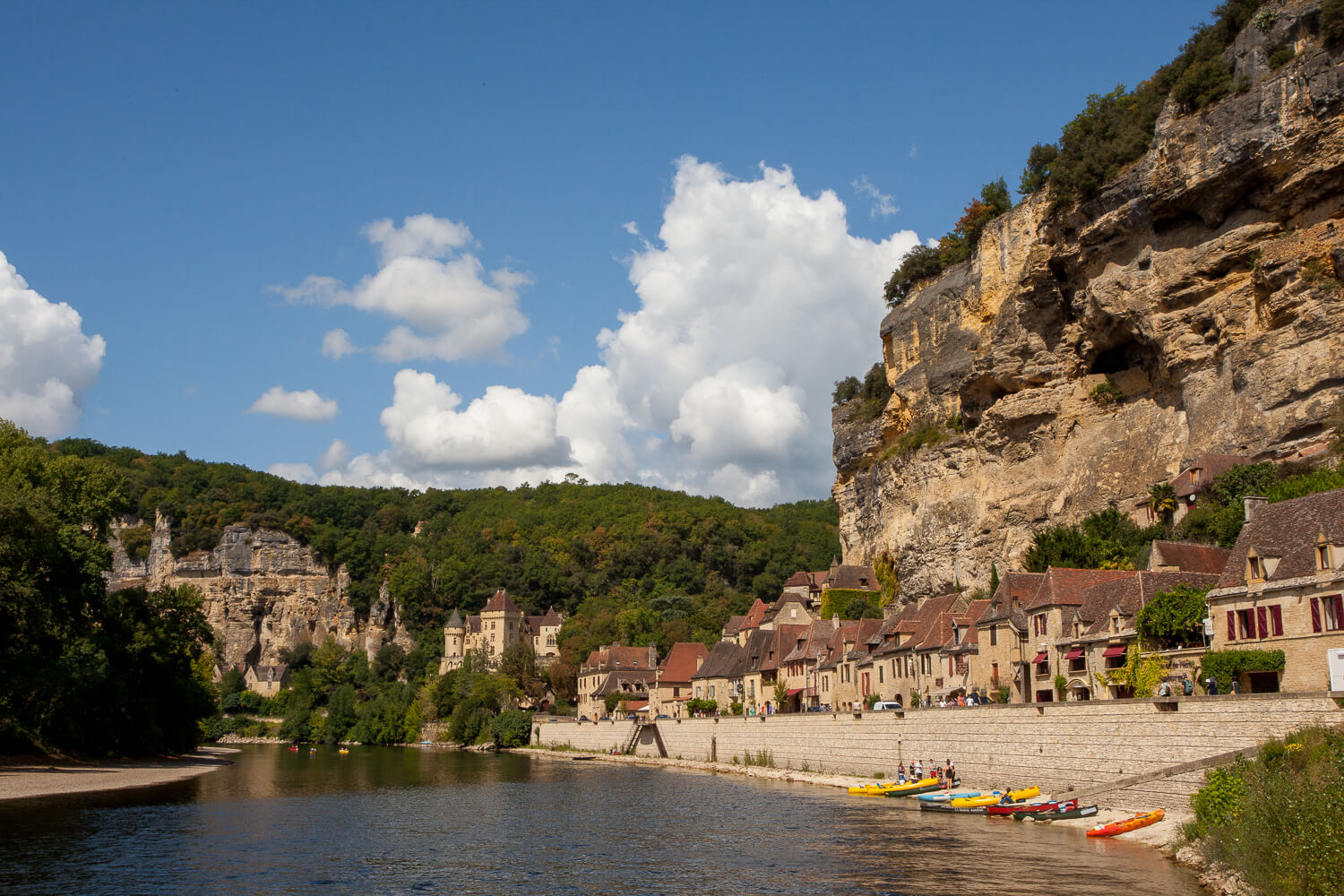
Limestone cliffs tower over the narrow village of La Roque de Gageac.
Route D703 follows the Dordogne river and runs along the edge of the village. To reach the gardens, take any of the alleyways that branch off route D703 up towards the cliffs. The narrow passages meander through the houses past small courtyards and patios. Halfway up the cliffside, you’ll find the Renaissance-style house Manoir de Tarde. Its prominent stone tower dominates the village’s skyline. Small mullion windows are barely visible through the thick ivy that covers the tower.
Continue down the road and you’ll soon see the rotunda of a stone Romanesque church peeking through the lush greenery. Head towards the church to view the “Les Jardins de La Roque de Gageac.” The garden does not have a distinct boundary, as the whole village seems to be filled with plants. But as you get closer to the church, the density of plants increases with many of them encroaching onto the road. Overhead, palm fronds form a dense canopy.
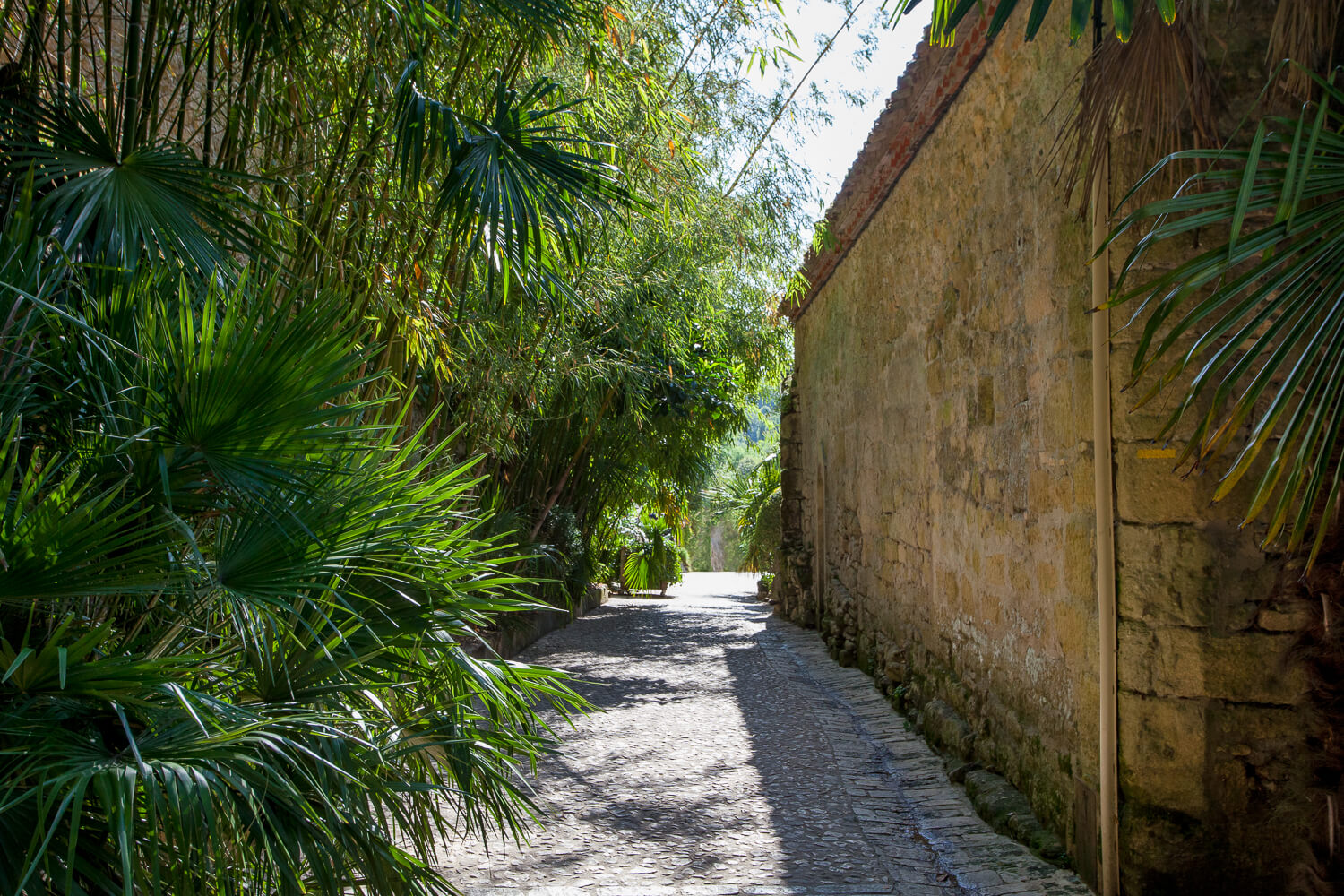
Palms surround the narrow road that leads to the gardens of La Roque de Gageac.
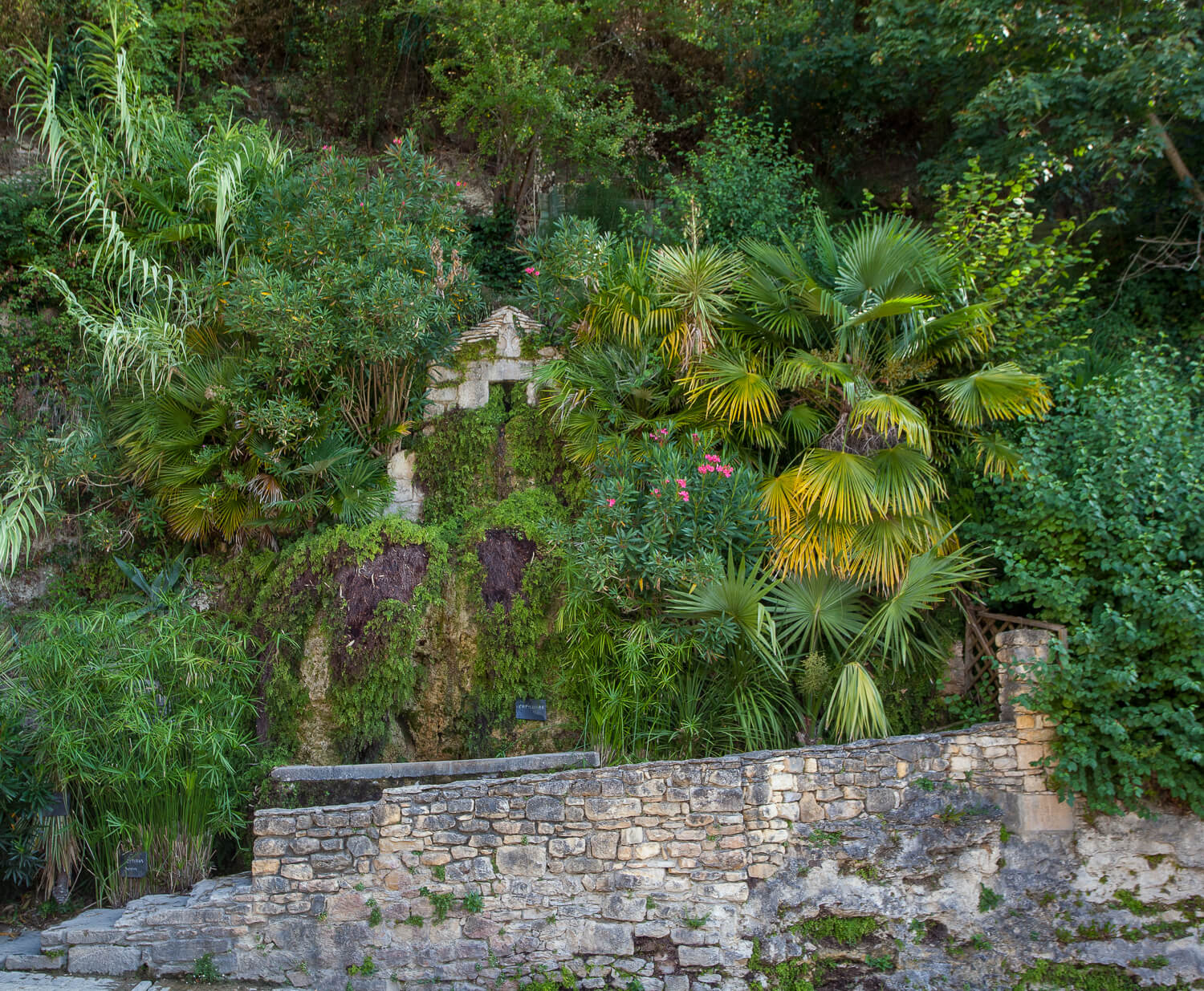
This densely planted cliffside is the main focal point of the gardens of La Roque de Gageac.
This exotic gardens of La Roque de Gageac began nearly 40 years ago by Gérard Dorin, President of the horticultural society Fous de Palmiers. His passion for palms and tropical botany inspired him to create this garden oasis on the banks of the Dordogne river.
Which leads to the obvious question: “how is this possible?” Palm trees usually don’t come to mind when thinking about medieval French villages. But, a unique microclimate enables the cultivation of Mediterranean and subtropical plants. Tall limestone cliffs protect the village from cold winds, which also creates a more arid environment. The village faces south and is warmed by the sun the entire day.
As you’d expect in a quaint French village, geraniums and petunias cascade from window boxes. Not so common are the exotic blossoms of the oleander, hibiscus, bougainvillea, and yucca plants that provide colorful accents to the lush greenery. You’ll also find pomegranates, lemons, olives, passion fruit, and figs growing throughout the village.
After exploring the gardens surrounding the church, look for a small arch at the top of a staircase. At the bottom, you’ll enter the L’allee des Bananiers. Green light filters through the arching banana leaves transporting you to the jungle. A narrow dirt path cuts through the dense banana grove. Follow this path to head back to the banks of the Dordogne river.
Gérard Dorin died in December 2014. In his honor, a plaque was installed in the garden with the Henry Miller quote “If paradise existed on earth, it is surely this decor he would have chosen.” I can’t think of a more fitting description for the gardens of La Roque de Gageac.


